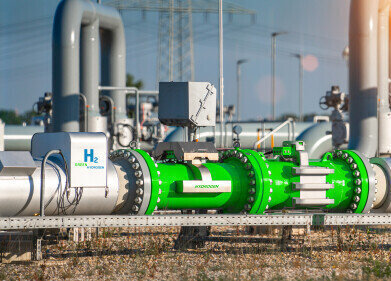Biofuel industry news
What Are the Different Types of Oil Analysis?
Mar 04 2022
Analysts rely on a variety of different techniques to profile oil, ranging from manual methods to automated technologies. Below, we take a closer look at the different types of oil analysis used in the energy sector.
Elemental analysis
Inductively Coupled Plasma (ICP) spectroscopy is the most common technique used to carry out elemental analysis in oils. Highly sensitive devices are used to detect and quantify elements such as aluminium, copper, chlorine, calcium, lithium and magnesium. Concentrations are recorded in parts per million (ppm) or milligrams per kilogram (mg/kg). X-Ray Fluorescence machine (XRF) is an alternative method used for elemental analysis. It’s particularly useful for samples that have been contaminated by water.
Viscosity analysis
Viscosity analysis measures internal friction and describes how resistant oil is to movement. It’s one of the most important physical properties measured during oil analysis, with results used to predict how an oil will behave in any given application. The International Organisation for Standardisation (ISO) publishes a variety of methods used to measure viscosity, all using a benchmark temperature of 40°C.
Ferromagnetic analysis
Many testing labs rely on ferromagnetic Particle Quantifier (PQ) devices to detect traces of iron and steel. Results are used to generate a PQ index number, which generally ranges from 10 to 300 depending on concentrations. While ICP analysis detects microscopic particles released during wear, ferromagnetic PQ instruments are used to detect larger metallic fragments. These can often sink to the bottom of samples and evade ICP testing.
Fourier Transform Infrared (FTIR) analysis
Powered by purpose-built software, FTIR technology is used to measure the rate at which infrared light is absorbed through a sample. The method is based on the idea that every compound has a unique resonant frequency determined by molecular bonds. FTIR software is used to analyse energy pathways across a variety of wavelengths and actively search for resonant frequencies associated with contaminants. The process is complex and multifaceted, with testing laboratories relying heavily on specialised instruments, software and screening tools, as well as the expertise of personnel.
Titration analysis
While useful for quantifying concentrations of dissolved substances, titration analysis can be time consuming and expensive. The analytical technique measures concentrations of analytes by adding a reagent to a sample until a desired reaction takes place. Common applications for titration analysis include measuring Total Acid Number (TAN) and Total Base Number (TBN).
These are just some of the different types of oil analysis used within the energy industry. For more information on the specialised techniques used to detect metals, contaminants and other compounds of interest, don’t miss 'Why measure salt in crude oil? Development of an innovative handheld instrument that helps measure salt content anywhere, anytime.'
Digital Edition
PIN 26.1 Feb/Mar 2025
March 2025
Analytical Instrumentation - Elemental Analysis for Quality and Process Control at Refineries, for Lubricants and Wear Metals in Engine Oils - Synthetic Lubricants: New Developments - Scaling...
View all digital editions
Events
Apr 08 2025 Birmingham, UK
Apr 08 2025 Kielce, Poland
Apr 08 2025 Ravenna, Italy
Apr 08 2025 Southampton, UK
Apr 08 2025 London, UK



















